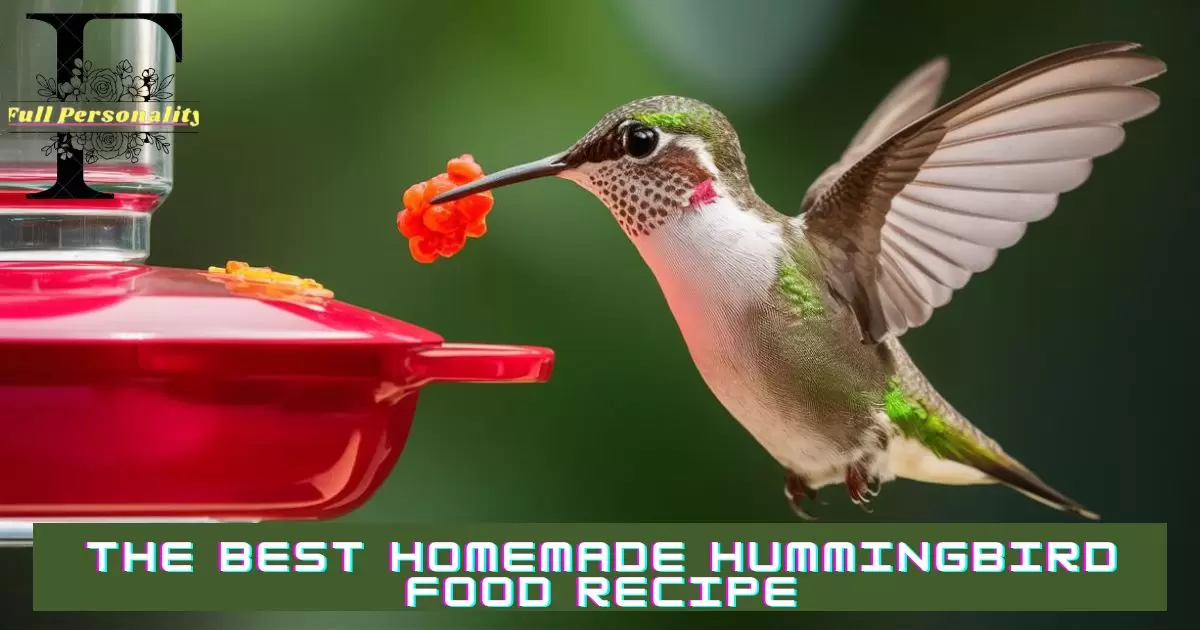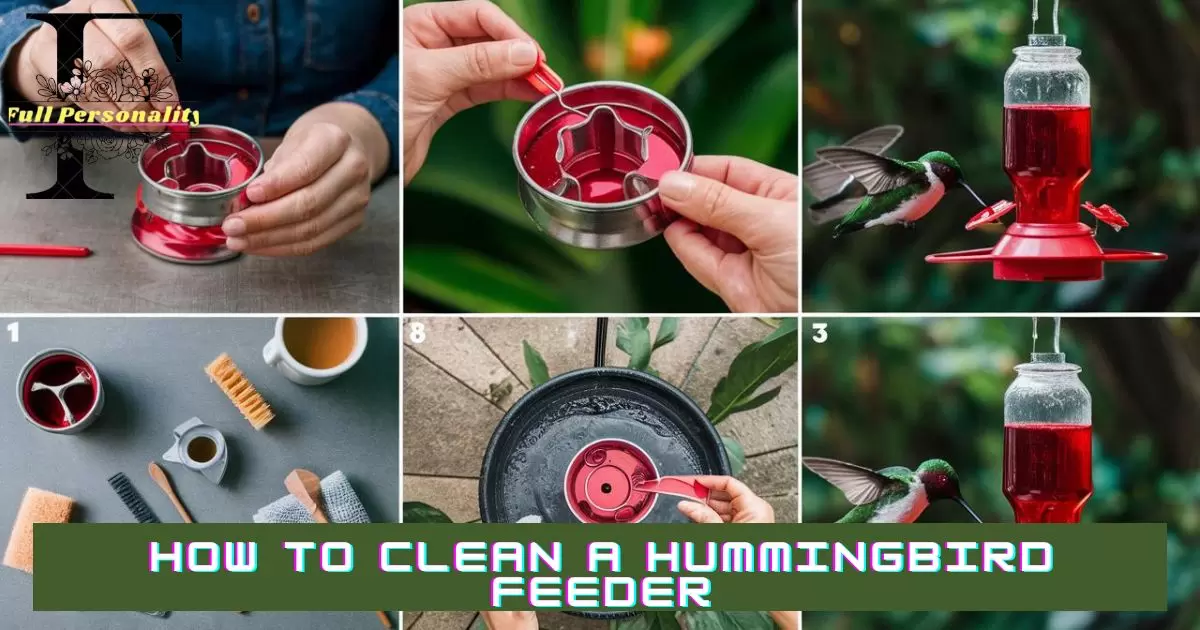Hummingbirds, with their iridescent plumage and astonishing aerial acrobatics, have captivated birdwatchers and nature enthusiasts alike. To attract these enchanting creatures to one’s garden, providing a consistent food source is paramount. While commercial nectar is readily available, crafting homemade hummingbird food offers greater control over ingredients and potential cost savings.
This comprehensive guide delves into the art of preparing homemade hummingbird nectar, providing expert tips, and exploring optimal feeder placement to create an inviting habitat for these diminutive avian gems.
Why Make DIY Hummingbird Food?
Hummingbirds, those dazzling jewels of the avian world, are a delight to watch. Their rapid wingbeats, iridescent feathers, and acrobatic feeding maneuvers are a captivating spectacle. To attract these tiny wonders to your garden, providing a reliable food source is essential. While commercial hummingbird nectar is readily available, creating your homemade hummingbird food offers several advantages.
You may want to Read: How To Become A Fashion Designer?
Cost-effective: Homemade hummingbird food is significantly cheaper than store-bought nectar. By making your own, you can enjoy substantial savings without compromising quality.
Control over ingredients: When you make your hummingbird food at home, you have complete control over the ingredients. This allows you to avoid artificial sweeteners, red dyes, and other unnecessary additives that can harm hummingbirds.
Freshness: Homemade hummingbird food is always fresh. Store-bought nectar can sit on shelves for extended periods, potentially losing its nutritional value.
Environmental consciousness: By reducing your reliance on plastic bottles and packaging, you contribute to a greener planet.
Hummingbird Food Ingredients
The foundation of any great hummingbird food recipe is simplicity. Hummingbirds require a specific energy-rich diet to fuel their high metabolism. The two primary ingredients for homemade hummingbird food are:
You may want to Read: How To Become A Fashion Designer?
- White granulated sugar: This is the preferred sweetener for hummingbirds. Avoid using brown sugar, honey, or artificial sweeteners as they can be harmful to these tiny birds.
- Water: Clean, filtered water is essential for creating the hummingbird nectar solution.
How to Make Hummingbird Food
Making homemade hummingbird food is a straightforward process that anyone can master. Here’s a basic recipe:
Ingredients:
- 1 cup white granulated sugar
- 4 cups water
Instructions:
- Combine sugar and water: In a saucepan, combine the sugar and water.
- Bring to a boil: Bring the mixture to a rolling boil for one minute. This step is crucial to dissolve the sugar completely and kill any potential bacteria.
- Let cool: Remove the saucepan from the heat and allow the mixture to cool completely before transferring it to a clean hummingbird feeder.
Expert Tips
While the basic recipe is simple, there are a few expert tips to enhance your hummingbird feeding experience:
- Avoid red dye: Red dye is often added to commercial hummingbird nectar to attract birds. However, there’s no scientific evidence to support its effectiveness, and it can potentially harm hummingbirds. The natural red color of many hummingbird feeders is sufficient to attract these birds.
- Change nectar frequently: Hummingbird nectar spoils quickly, especially in warm weather. To prevent mold and bacteria growth, change the nectar in your feeders every 2-3 days.
- Clean feeders regularly: Thoroughly clean and sterilize your hummingbird feeders with hot, soapy water to remove sugar residue and prevent disease.
- Provide variety: While sugar water is the primary food source for hummingbirds, they also enjoy feeding on nectar from flowers. Plant a variety of hummingbird-friendly flowers in your garden to attract these beautiful birds.
Ideas for Putting Hummingbird Feeders in Your Yard or Garden
The placement of your hummingbird feeders can significantly impact their attractiveness to these tiny birds. Consider the following tips:
You may want to Read: What Is Y2k Fashion And How To Wear Y2k Clothing?
- Choose a visible location: Hummingbirds are attracted to bright colors. Place your feeders in a spot that is easily visible from different angles in your yard.
- Provide shade: While hummingbirds enjoy basking in the sun, they also need protection from extreme heat. Place your feeders near trees or shrubs that offer shade.
- Consider predator protection: Hummingbirds are vulnerable to predators. Position your feeders in a location that is sheltered from cats, squirrels, and other potential threats.
When to Put Out Feeders
The best time to put out hummingbird feeders depends on your location. In general, you can start putting out feeders in early spring as hummingbirds begin their migration. However, it’s essential to monitor the weather and local hummingbird activity to determine the optimal timing.
You may want to Read: Fashion Step By Step
Where to Put Feeders
The ideal location for your hummingbird feeders is a spot that offers a clear view of the surrounding area. Hummingbirds are territorial, so placing multiple feeders at a distance can attract more birds. To avoid crashes, keep feeders away from windows.
Plants to Attract Hummingbirds
In addition to providing hummingbird feeders, planting a variety of hummingbird-friendly flowers can create an inviting oasis for these tiny creatures. Some popular choices include:
- Trumpet vine: This vibrant flowering vine is a hummingbird magnet.
- Salvia: Salvia comes in various colors and attracts hummingbirds with its nectar-rich flowers.
- Fuchsia: The delicate blooms of fuchsia plants are irresistible to hummingbirds.
- Columbine: This perennial flower offers a feast of nectar for hummingbirds.
- Petunia: Petunias come in a wide range of colors and attract hummingbirds with their sweet nectar.
Best Hummingbird Feeders
Choosing the right hummingbird feeder is essential for attracting and satisfying these tiny birds. Consider the following factors when selecting a feeder:
- Capacity: Choose a feeder that is appropriate for the number of hummingbirds in your area.
- Design: Look for feeders with multiple feeding ports to accommodate several birds at once.
- Cleaning ease: Opt for a feeder that is easy to disassemble and clean.
- Material: High-quality feeders made from durable materials will last longer.
You may want to Read: Fashion Step By Step
How to Clean a Hummingbird Feeder
Regular cleaning is crucial for maintaining the health of hummingbirds. Follow these steps to clean your feeder:
- Disassemble the feeder: Carefully take apart the feeder according to the manufacturer’s instructions.
- Wash with hot, soapy water: Scrub all parts of the feeder with hot, soapy water to remove sugar residue and any mold or mildew.
- Rinse thoroughly: Rinse all parts of the feeder with hot water to remove any soap residue.
- Air dry: Allow all parts of the feeder to air dry completely before reassembling.
10 Fun Facts About Hummingbirds
- Hummingbirds are the smallest birds in the world.
- They can hover in mid-air.
- Hummingbirds can fly backward.
- Their hearts beat up to 1,200 times per minute.
- They consume half their body weight in sugar water each day.
- Hummingbirds migrate thousands of miles.
- They can see ultraviolet light.
- Hummingbirds have a remarkable metabolism.
- They take short naps throughout the day.
- Hummingbirds are incredibly territorial.
Ingredients:
- 1 cup white granulated sugar
- 4 cups water
Instructions:
- Combine sugar and water in a saucepan.
- Bring to a rolling boil for one minute.
- Let cool completely before filling the feeder.
Notes:
- Avoid red dye.
- Change nectar every 2-3 days.
- Clean feeders regularly.
- Provide variety with flowers.
You may want to Read: well health how to Build Muscle Tag: Simple Practical Guide
Nutrition:
Hummingbird food provides essential energy for flight.
Can I use tap water?
It’s best to use filtered or bottled water.
What kind of sugar should I use?
White granulated sugar is the only suitable option.
Should I boil the water?
Boiling kills bacteria and dissolves sugar completely.
What time of day do hummingbirds come to feeders?
Hummingbirds are most active in the morning and late afternoon.
By following these guidelines and providing a welcoming environment, you can enjoy the enchanting presence of hummingbirds in your garden.
FAQs
What is the best mixture for hummingbird food?
The optimal hummingbird food mixture is a simple solution of one part white granulated sugar to four parts water. This ratio provides the necessary energy boost without overwhelming their tiny bodies. Avoid adding red dye or artificial sweeteners, as these can be harmful.
Is 3 1 or 4 1 better for hummingbird food?
A 1:4 ratio (one part sugar to four parts water) is the recommended mixture for hummingbird food. A sweeter solution, like 3:1, can be harmful to their delicate digestive systems and lead to health issues. Stick to the classic 1:4 ratio for the best results.
How do you make a homemade hummingbird feeder?
Creating a homemade hummingbird feeder is a fun and rewarding project. You’ll need a clean container with small feeding holes. Mix one part white sugar to four parts water, boil, and let cool. Fill the feeder and hang it in a visible, shaded location. Regular cleaning is essential to prevent mold and bacteria.
Can you use brown sugar for hummingbird food?
No, you should never use brown sugar for hummingbird food. Brown sugar contains impurities and can ferment, creating a toxic environment for hummingbirds. Stick to white granulated sugar for the safest and most nutritious option.
Conclusion
Creating a haven for hummingbirds in your garden is a rewarding endeavor that brings immense joy. By providing homemade hummingbird food, you’re not only saving money but also ensuring these tiny marvels receive the best possible nutrition.
Remember, consistency is key. Keep your feeders clean, the nectar fresh, and your garden filled with colorful blooms. With a little effort, you’ll be amazed at the number of hummingbirds that flock to your yard.
So, roll up your sleeves, put on your gardening gloves, and embark on this delightful journey of attracting hummingbirds. Your backyard oasis awaits! Witness the magic of nature unfold as these tiny, iridescent wonders grace your space with their presence. It’s a symphony of color and movement that will leave you captivated.
Hello, I’m Rizwan Ullah, the founder of Full Personality. With a background in SEO and three years of experience, I’ve always been fascinated by the ever-changing world of blogging. Full Personality is my platform to delve into the future of blogging. When not exploring tech trends, I focus on SEO and SERPs. I believe in building a community that shares ideas and stays ahead in innovation. Join me on this exciting journey!



